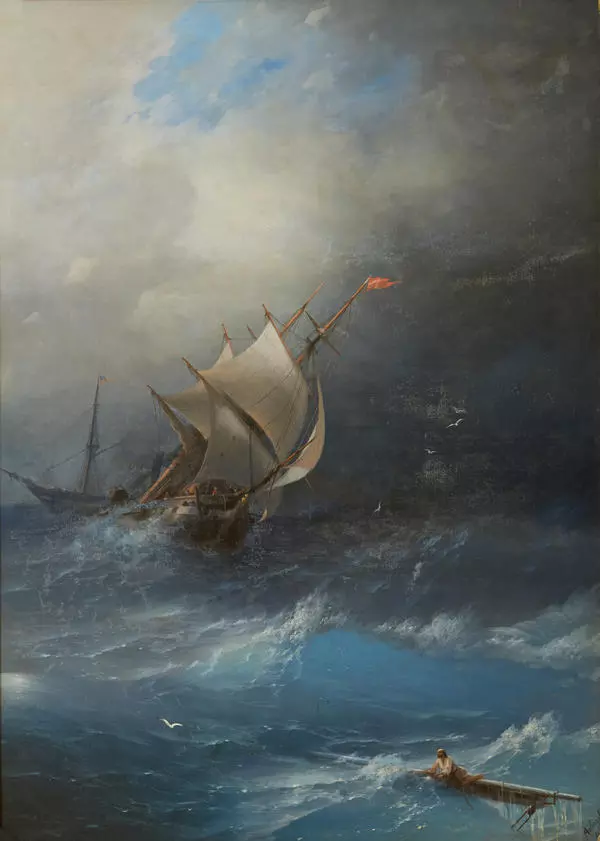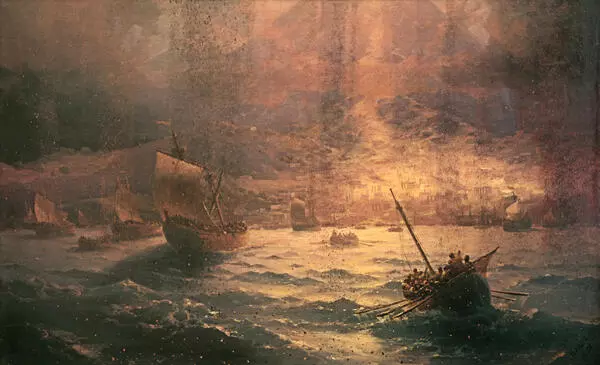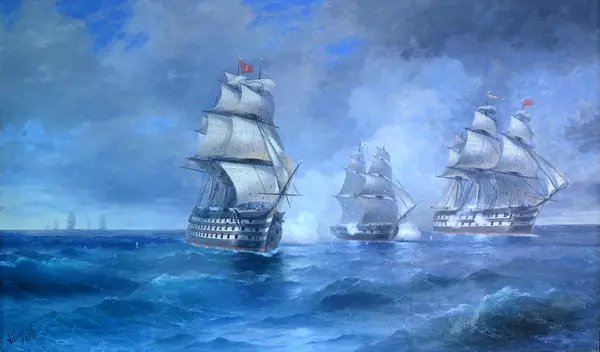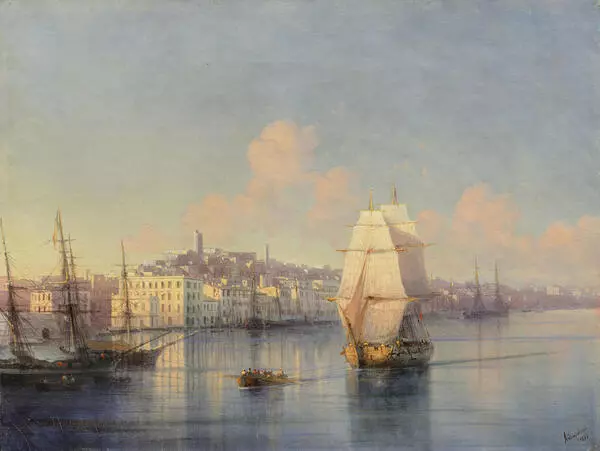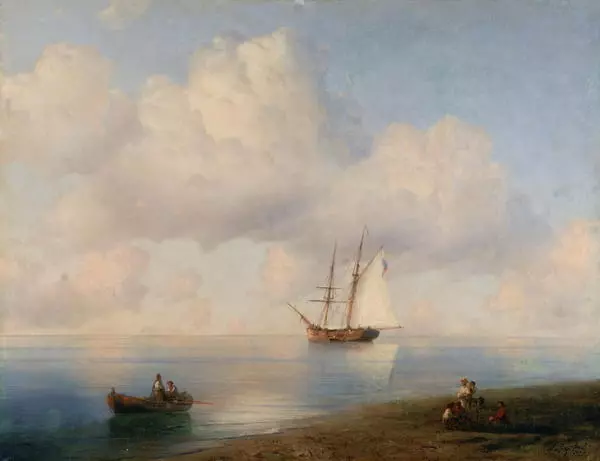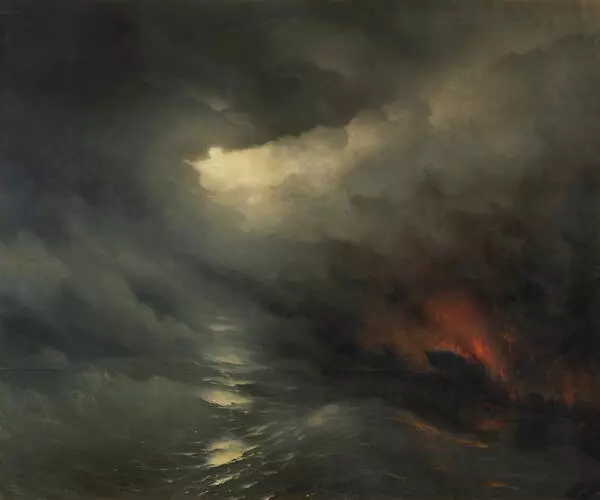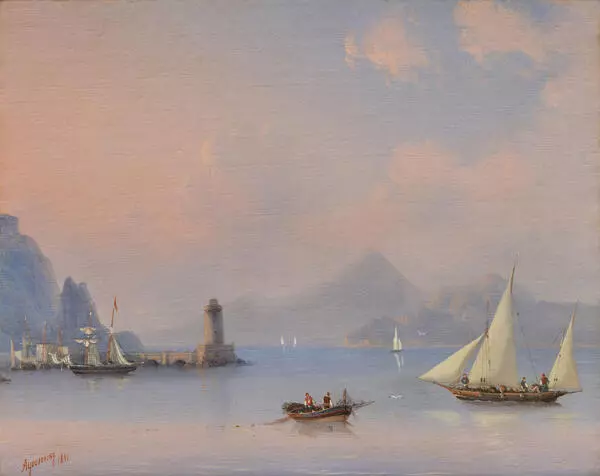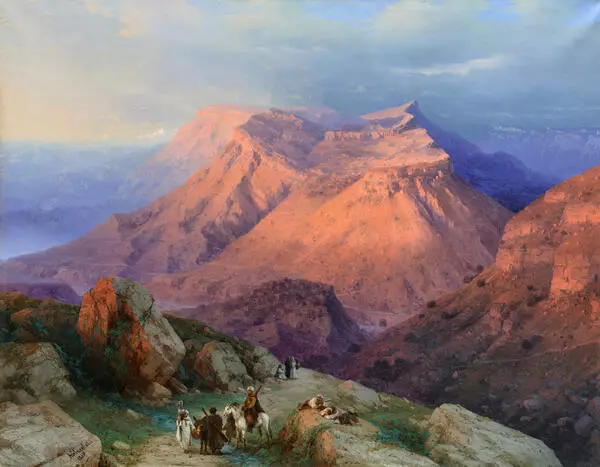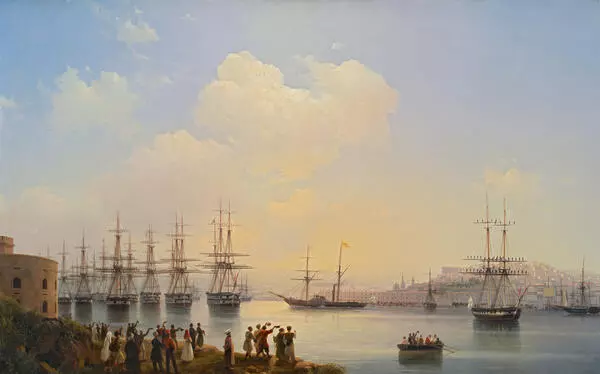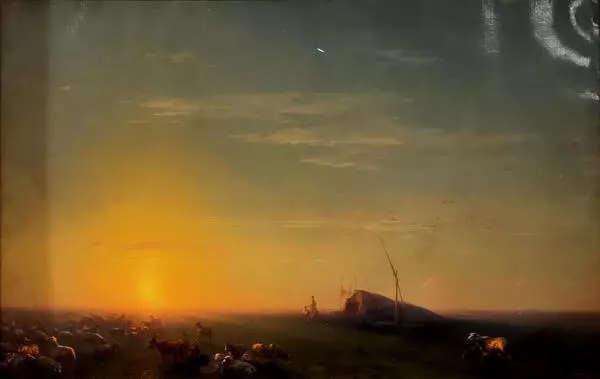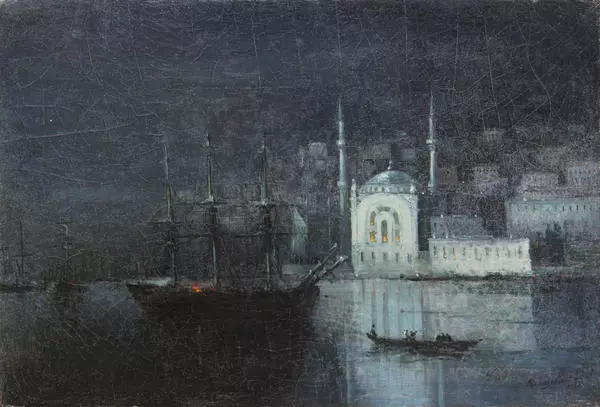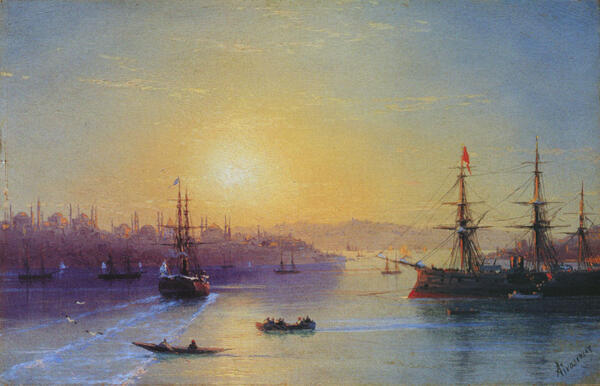Ivan Aivazovsky created the painting ‘Stormy sea’ in 1887. He illustrated a raging storm carrying a boat towards the rocks. In the foreground, the artist portrays a piece of the mast in the translucent water. On the right side of the painting there is a huge cliff. On the left, in the background of the image, a tilted ship and its mast with a red flag is visible. The top part of the canvas is filled with a yellow-grey sky. The artist highlighted the clouds on the left to emphasize the light source. The artist’s signature is in the right corner of the painting “Aivazovsky 1887”.
Ivan Aivazovsky is one of the most famous marine artists in the world. He was born in Feodosia in 1817 into an entrepreneurial Armenian family. After studying at the St. Petersburg Academy of Arts, the artist worked in Crimea, Italy, and visited France and many other countries. The artist loved to travel, but in 1845 he returned to his hometown. He loved Feodosia and wanted to live in Crimea near the Black Sea.
The early works of Ivan Aivazovsky were largely influenced by classic French landscape artists — Claude Lorrain and Claude Vernet. Both artists painted marinas — seascapes. But in traditional paintings of classicism the sea was still, creating an ideal image instead of a live element. The French usually framed the compositions with trees, architecture or rocks on the sides of the paintings, which created an ornamental background similar to frames for the seascapes.
Ivan Aivazovsky strongly reevaluated the classical approach. He removed excessive contrasts in the background and achieved real vividness in his paintings. Over time the artist developed his own artistic style. With the use of the thinnest layers of paint imbued with light, he masterfully captured the realistic element of the movement of water. His paintings and sketches were done from memory in his workshop.
The moment this painting was created in 1887, Ivan Aivazovsky was a recognized seascape artist. By this time he had painted “The Ninth Wave” and the “Moonlit Night, ” and his works were appreciated by Nicholas I and the Turkish sultan. The artist”s works are often related to romanticism, since the elements in his paintings are much more grandiose than in real life. Also, sometimes they identify with realism for their incredibly accurate renditions of the sea.
Ivan Aivazovsky is one of the most famous marine artists in the world. He was born in Feodosia in 1817 into an entrepreneurial Armenian family. After studying at the St. Petersburg Academy of Arts, the artist worked in Crimea, Italy, and visited France and many other countries. The artist loved to travel, but in 1845 he returned to his hometown. He loved Feodosia and wanted to live in Crimea near the Black Sea.
The early works of Ivan Aivazovsky were largely influenced by classic French landscape artists — Claude Lorrain and Claude Vernet. Both artists painted marinas — seascapes. But in traditional paintings of classicism the sea was still, creating an ideal image instead of a live element. The French usually framed the compositions with trees, architecture or rocks on the sides of the paintings, which created an ornamental background similar to frames for the seascapes.
Ivan Aivazovsky strongly reevaluated the classical approach. He removed excessive contrasts in the background and achieved real vividness in his paintings. Over time the artist developed his own artistic style. With the use of the thinnest layers of paint imbued with light, he masterfully captured the realistic element of the movement of water. His paintings and sketches were done from memory in his workshop.
The moment this painting was created in 1887, Ivan Aivazovsky was a recognized seascape artist. By this time he had painted “The Ninth Wave” and the “Moonlit Night, ” and his works were appreciated by Nicholas I and the Turkish sultan. The artist”s works are often related to romanticism, since the elements in his paintings are much more grandiose than in real life. Also, sometimes they identify with realism for their incredibly accurate renditions of the sea.




